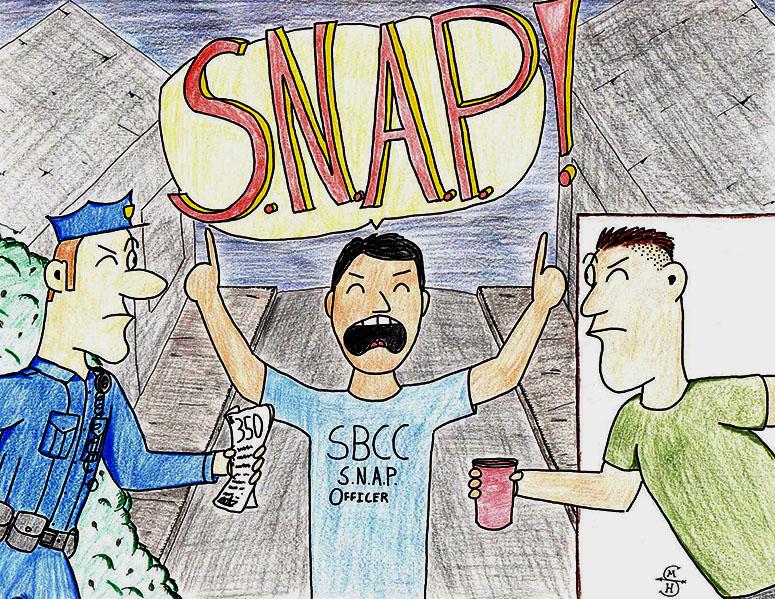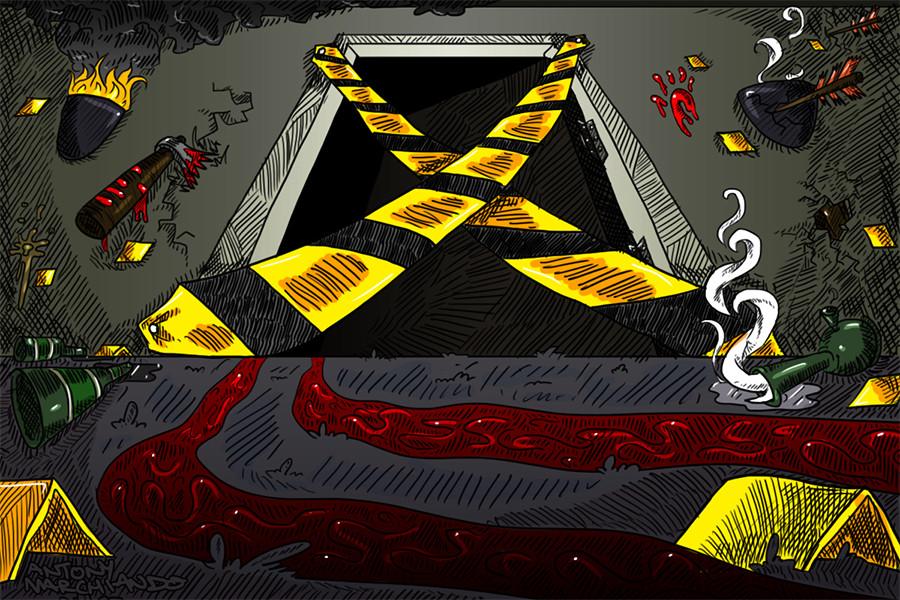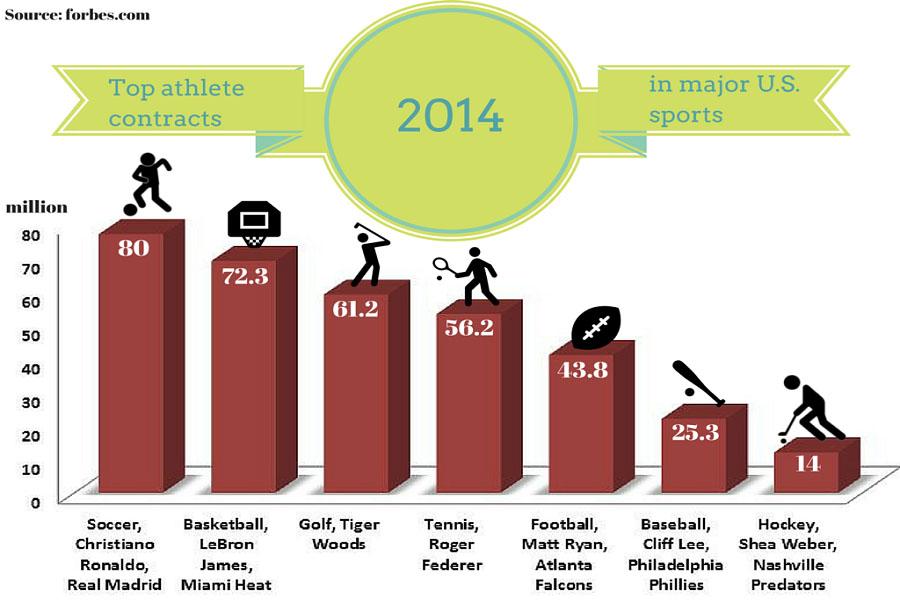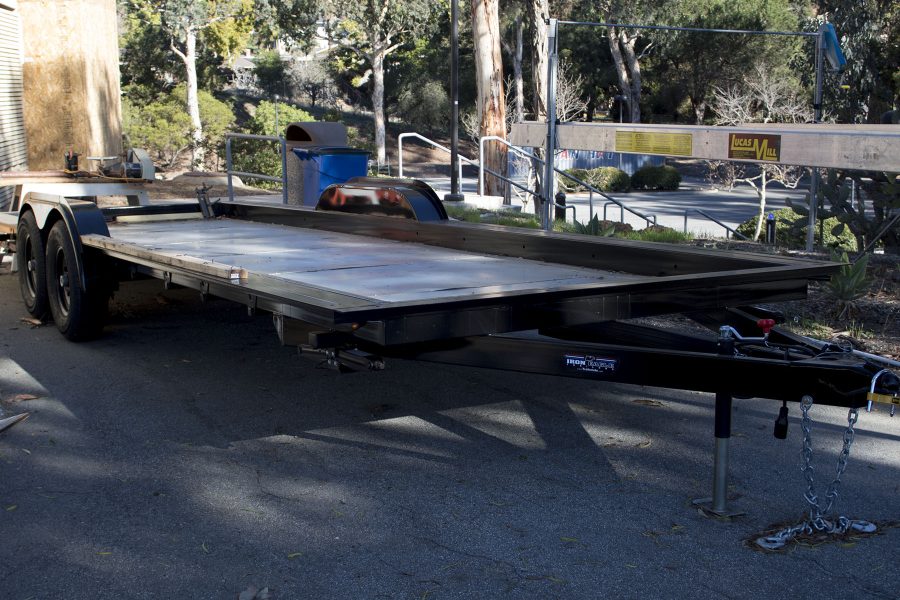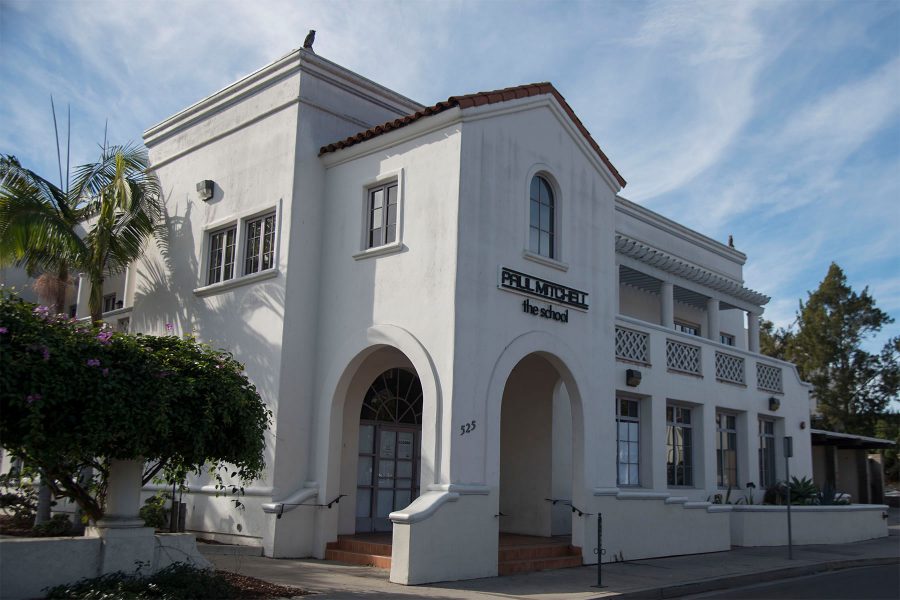About 6 good throws of the javelin, 1.5 laps around the track, or an eight minute walk from City College, lays La Brezza Apartments. The parking lot outside the popular student residence is packed with cars, and their windshields are decorated with little red and silver stickers that read “SBCC.”
This column is not about the approximately 68 percent of U.S. adults who are overweight or obese. Neither is it about that the state of California alone produces 1.4 percent of the world’s greenhouse gas emissions, or that polluted air kills 24,000 Californians each year.
It is about the abuse of the four-wheeled common denominator for all this: the car.
Don’t get me wrong, the car is terrific; there’s nothing like a spontaneous road trip or the comfort of a roof over your head on a rainy day.
However, today’s anti-moving trends – drive-ins, segways, electric scooters, circulating the parking lot for the spot closest to the entrance; or driving to school 0.4 miles away – are taking us disturbingly close to the immobile, spineless “blobs” of humans we see in “Wall-E.”
Americans are incredibly athletic, without a doubt, and California is somewhat of a Mecca for people interested in their wellbeing; fit bodies are constantly swarming the boardwalk, as well as the gyms.
But even to the gym – the healthiest place on earth, and the one place you go solely to exercise and invigorate your body – people insist on bringing their beloved machine.
You’re crossing the river for water.
Studies show we need an hour of dynamic exercise a day to stay fit.
However, to stay in shape – not to lose some excessive insulation or bang up a stone wall of a stomach, but to show the old heart some compassion, and fight off at least a couple of California Melts – 20 to 30 minutes a day of activities at a modest pace will help.
Exercise also triggers the release of endorphins, the natural “happy pills” of our body. This makes it easy to understand why Americans placed 23rd on the list of the happiest people on earth, with more cars than drivers within the country’s borders.
Let’s cross the Atlantic and take a look at Denmark, a small Scandinavian country with only 5.5 million inhabitants, who happen to be the happiest people on earth according to the same list. Based on social science, the ABC article explains this fact with several motivations, perhaps the most significant one being their use of bicycles, a keen endorphin releaser.
However, in the U.S. the use of cars has steadily increased since the booming ‘60s, and there are now about 1.2 cars to each driver. The graph for obesity, since the same year has an astonishingly similar curve, shows an increase of more that 100 percent.
Santa Barbara is a tiny city. The outskirts of downtown are merely three miles away from City College – that’s a 15-minute bike ride.
Obviously, not everyone lives within a reasonable biking or walking distance, but those who do: why not save yourself the $33.25 for that red little sticker each semester and spend them on something nicer – and healthier?



